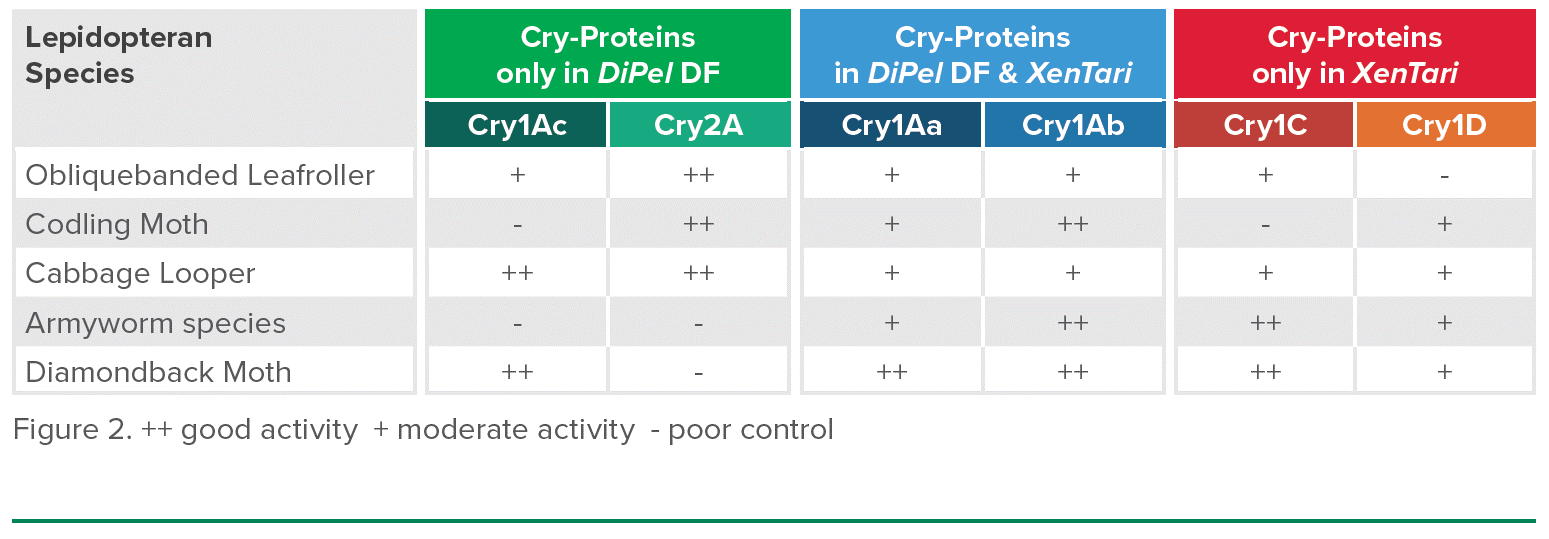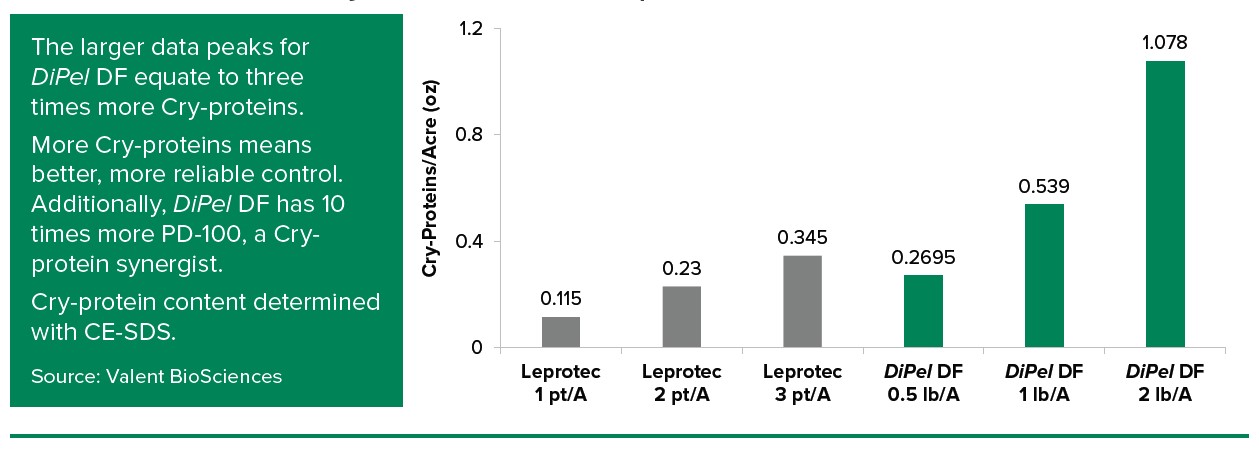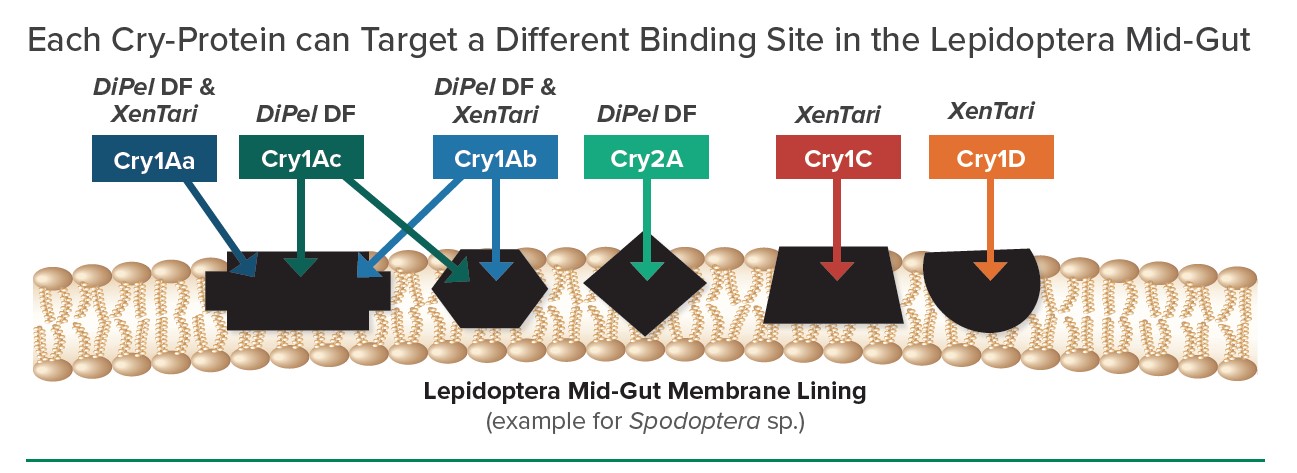How are DiPel® DF and XenTari® Different from Other Bts?
Bacillus thuringiensis (Bt) is a naturally-occurring bacterium and the most widely used biological insecticide globally. Unlike synthetic insecticides, Bts generate insecticidal crystal proteins (Cry-proteins), which bind to specific target sites only found in the Lepidoptera gut. Cry-proteins cause the Lepidoptera gut to rupture, stopping feeding quickly.
DiPel® DF Biological Insecticide Dry Flowable† and XenTari® Biological Insecticide Dry Flowable† offer effective ratios of unique Cry-proteins to control problematic Lepidoptera. DiPel DF is designed for broad spectrum Lepidoptera activity by having a balanced ratio of four Cry-proteins (Figure 1). XenTari has a Cry-protein profile that includes Cry1D (Figure 1). DiPel DF targets Lepidoptera like leafrollers and internal feeders like codling moth. XenTari provides outstanding control of armyworm and diamondback moth Lepidoptera due to its optimized Cry-protein profile.

The Cry-Protein Strain and Ratio Make the Difference with Bts
Lepidoptera have different Cry-protein target sites, as shown below in Figure 2. Bts can have a broad spectrum (like DiPel DF) or a unique spectrum (like XenTari) of activity based on the type and ratio of Cry-proteins they contain. Each Cry-protein can bind to a different receptor in the Lepidoptera gut. Figure 2 shows a sampling of key pests and how each is impacted from the optimized strain and ratio of Cry-proteins found in DiPel DF and XenTari.

DiPel DF has More Cry-Proteins Than Leprotec® for More Reliable Control

Unique Mode of Action is Key for Resistance Management
Bts contain both Cry-proteins and spores, which enter the Lepidoptera’s gut during feeding. Cry-proteins only dissolve in the uniquely high pH of the Lepidoptera’s mid-gut and will not affect beneficial insects and other non-target organisms. Cry-proteins bind to specific receptors on cells lining the mid-gut and then insert into the cell membrane forming pores, which quickly stops feeding. Pore formation increases the permeability of the mid-gut lining causing it to rupture. This allows viable spores and gut microbes to invade the insect’s body causing sepsis and death. There is no known cross resistance between the Bt mode of action and any other class of insecticides, making DiPel DF and XenTari some of the most effective tools for managing resistance.

Click here to learn more about DiPel DF and click here for XenTari.
Always read and follow label instructions.
DiPel and XenTari are registered trademarks of Valent BioSciences LLC.
DiPel DF and XenTari are NOP compliant and OMRI listed for organic production.